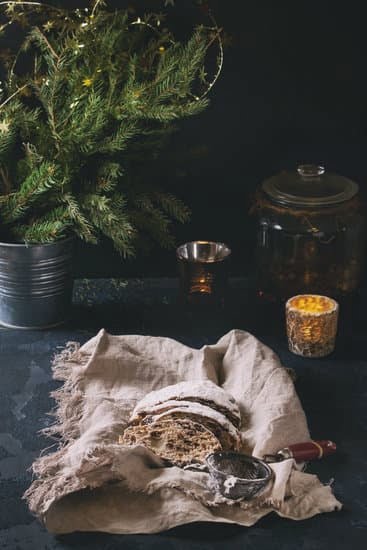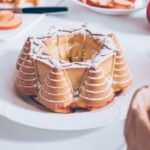Are you wondering how to decorate a princess cake fit for royalty? Princess cakes have long been a symbol of elegance and sophistication in the world of baking and celebrations.
From their rich history to the meticulous crafting of intricate designs, princess cakes hold a special place in the hearts of both bakers and those who indulge in them. In this article, we will explore the art of decorating a princess cake, providing step-by-step guidance on creating a masterpiece that is sure to dazzle any crowd.
Princess cakes have been an iconic dessert choice for special occasions such as birthdays, weddings, and other milestone celebrations. With their origins dating back to the 1930s in Sweden, these confectionary delights have captivated bakers and dessert enthusiasts worldwide. The unique design elements and delicate decorations make princess cakes stand out as a centerpiece at any festive gathering.
In this article, we will delve into the essential components of decorating a princess cake, from selecting the perfect base to adding regal accents that elevate its appearance. We will discuss techniques for creating flawless frosting, working with fondant to craft intricate designs and patterns, selecting harmonious color palettes, and personalizing the cake to fit the recipient’s preferences.
By the end of this guide, you will be equipped with the knowledge and skills needed to adorn your own show-stopping princess cake.
Selecting the Right Base
When it comes to creating a beautiful and delicious princess cake, choosing the right base is essential. The cake itself serves as the foundation for the entire design and must complement the flavors of the frosting and decorations. There are several things to consider when selecting the perfect cake base for a princess cake.
Flavor
The first consideration when selecting a cake base for a princess cake is the flavor. Traditional options like vanilla and chocolate are always popular choices, but you can also get creative with flavors like lemon, strawberry, or coconut. Consider the preferences of the recipient and choose a flavor that they will love.
Texture
In addition to flavor, the texture of the cake is crucial for a princess cake. It should be light and fluffy, providing a delicate contrast to the rich frosting and decorations. Avoid dense or heavy cakes, as they may not provide the desired effect when cut into slices.
Size
Finally, consider the size of the cake when choosing a base for a princess cake. The size should be appropriate for the number of servings needed and fit well with any tiered designs or special shapes you plan to create. Remember that larger cakes may require additional support to hold their shape and structure.
Ultimately, selecting the right base for your princess cake is an important first step in creating a stunning and delicious dessert. By considering flavor, texture, and size, you can ensure that your cake provides the perfect canvas for all of your beautiful decorations and truly captures the magic of a princess-themed celebration.
Creating the Perfect Frosting
When it comes to creating a beautiful princess cake, the perfect frosting is essential. The frosting not only adds flavor but also serves as a smooth canvas for decorative elements. There are various types of frostings that can be used for a princess cake, including buttercream, whipped cream, and cream cheese frosting. Each type has its own unique texture and flavor, so it’s important to choose one that complements the overall taste of the cake.
Making the Ideal Frosting
One of the most popular choices for princess cakes is Swiss meringue buttercream. This type of frosting is known for its silky texture and rich flavor. To make Swiss meringue buttercream, you will need egg whites, sugar, and unsalted butter. It’s important to follow a precise recipe and technique to achieve the perfect consistency. Other options like American buttercream or whipped cream can also be used based on personal preference.
Applying the Frosting
Once the ideal frosting is prepared, it’s crucial to apply it evenly to the cake layers. Using an offset spatula or a bench scraper can help achieve smooth and clean lines on the cake’s surface. A crumb coat should be applied first to seal in any loose crumbs before adding the final layer of frosting.
Tips for Achieving Flawless Results
To ensure a flawless princess cake, it’s important to work with chilled layers as they are easier to frost and decorate without causing any damage to the cake surface. Additionally, using a turntable while applying frosting allows for easy maneuverability and even distribution of frosting around the entire cake. Finally, taking time to practice piping techniques for creating decorative borders or designs will add an extra level of elegance to the finished princess cake.
Decorating With Fondant
Princess cakes are known for their intricate and beautiful decorations, often featuring delicate designs and patterns that add to their whimsical and regal appearance. One popular way to achieve these intricate details is by using fondant, a versatile sugar paste that can be molded and shaped to create a wide range of decorations. Here’s a step-by-step guide on how to decorate a princess cake with fondant:
1. Knead the Fondant: Start by kneading the fondant until it becomes smooth and pliable. This will help eliminate any cracks or air bubbles, ensuring that your decorations come out looking flawless.
2. Roll Out the Fondant: Using a rolling pin dusted with powdered sugar or cornstarch, roll out the fondant to your desired thickness. Aim for an even surface without any tears or creases.
3. Cut Out Shapes: Use cookie cutters or sharp knives to cut out shapes from the rolled fondant. These can include flowers, leaves, hearts, stars, or any other design that fits the theme of your princess cake.
4. Apply the Fondant Decorations: Gently lift and place your cut-out fondant decorations onto the frosted cake surface. Smooth down any edges or seams for a seamless look.
5. Add Detailing: If desired, use food-safe coloring gels or edible luster dust to add detail and dimension to your fondant decorations. This can include painting on accents, adding shimmer effects, or creating ombre color gradients.
By following these step-by-step instructions, you can elevate your princess cake with beautifully crafted fondant decorations that are sure to impress.
Additionally, working with fondants allows for endless creativity in terms of design and pattern options – from classic swirled patterns and lace-like detailing to three-dimensional figures such as tiaras and castles – making it ideal for creating custom princess-themed cakes tailored to individual tastes and preferences.
Choosing the Right Color Palette
Creating a visually appealing princess cake goes beyond just the flavor and texture of the cake itself. The right color palette is essential in making sure that the cake captures the enchanting and magical essence of a princess theme. When considering how to decorate a princess cake, selecting the right colors can significantly impact the overall look and feel of the cake.
One important aspect to consider when choosing a color palette for a princess cake is to take inspiration from popular Disney princesses or fairy tale themes. For example, soft pastel shades such as pink, lavender, and baby blue often evoke a sense of femininity and elegance, perfect for creating a whimsical and dreamy princess cake. In contrast, bolder jewel tones like royal purple, emerald green, and sapphire blue can be used to represent more majestic or regal princess characters.
In addition to considering the personality of the princess theme, it is also crucial to think about creating a harmonious color scheme that complements each other. This can be achieved by using color wheel principles to ensure that the chosen colors blend well together. By incorporating different shades within the same color family or using complementary colors on the wheel, you can create an eye-catching yet cohesive look for your princess cake.
When it comes to applying the colors onto the cake, whether through frosting or fondant decorations, it’s important to ensure that they are applied evenly and smoothly. The use of food-grade coloring gel or powdered food coloring allows for greater control over achieving specific hues without altering the texture or consistency of your frosting or fondant.
By mastering these techniques for selecting and applying colors on your princess cake, you can bring your creative vision to life with stunning results.
| Princess Cake Color Palette | Recommended Shades |
|---|---|
| Soft Pastels | Pink, Lavender, Baby Blue |
| Jewel Tones | Royal Purple, Emerald Green, Sapphire Blue |
Adding Royal Accents
When it comes to decorating a princess cake, adding royal accents can truly elevate the appearance and make it fit for royalty. Here are some ideas for incorporating regal elements such as edible pearls, gold leaf, and sparkling sugar to make your princess cake stand out:
- Edible Pearls: Edible pearls are a classic and elegant addition to any princess cake. You can use them to create delicate borders around each tier of the cake, or you can scatter them across the top for a luxurious look. Whether you choose white pearls for a traditional princess cake or colored pearls to match a specific theme, they add a touch of sophistication.
- Gold Leaf: For an opulent and extravagant touch, consider using gold leaf to adorn your princess cake. Gold leaf can be applied in delicate flakes or sheets to create shimmering accents that catch the light and command attention. Whether you opt for a simple gold border or intricate gold detailing throughout the cake, gold leaf is sure to give your creation a regal and luxurious feel.
- Sparkling Sugar: Adding sparkling sugar is an easy way to bring some dazzle to your princess cake. You can sprinkle it over the entire surface of the cake or use it selectively on certain areas to create sparkle and shine. Sparkling sugar comes in a variety of colors, so you can coordinate it with your color palette for a cohesive and enchanting effect.
These regal elements will undoubtedly take your princess cake from pretty to positively majestic. Whether you choose one of these elements or incorporate all three into your design, they are sure to add an extra touch of magic fit for any royal celebration.
Remember that creating an impressive princess cake requires attention to detail and careful execution when working with these royal accents. Take care when placing each pearl or applying gold leaf, ensuring that they are placed with precision and consideration for the overall design of the cake.
Personalizing the Cake
Princess cakes are not only delicious but also versatile in design, making them the perfect choice for a variety of celebrations such as birthdays, baby showers, and themed parties. When it comes to personalizing a princess cake, the options are endless and can be tailored to suit the theme, personality, and preferences of the recipient. Incorporating their favorite princess character or story can make the cake even more special and memorable.
One way to personalize a princess cake is by incorporating specific colors, decorations, and elements that resonate with the recipient’s favorite princess character. For example, if the recipient loves Elsa from Frozen, incorporating icy blue hues and snowflake-shaped decorations can instantly transform a simple princess cake into a Frozen-inspired masterpiece. Similarly, for a fan of Cinderella, adding delicate silver details and glass slipper motifs can beautifully capture the essence of this classic fairy tale.
Another way to customize a princess cake is by including edible images or handcrafted fondant figurines depicting the recipient’s favorite princess character. These intricate details can be created using food-safe dyes or sculpting techniques and serve as eye-catching focal points on the cake. Whether it’s a beloved Disney princess or a specific fairy-tale character, these personalized elements add an extra layer of meaning to the cake.
In addition to incorporating specific characters or stories, personalizing the flavor profile of the cake is another important aspect. By selecting flavors that align with the recipient’s preferences-such as chocolate for chocolate lovers or fruity flavors for those who enjoy refreshing desserts-the princess cake becomes not only visually tailored but also perfectly suited to their taste buds.
| Personalization Element | Details |
|---|---|
| Incorporating Favorite Colors | Using specific color palettes for favorite characters |
| Edible Images/Fondant Figurines | Adding visual representations of favorite characters on the cake |
| Flavor Profile Customization | Selecting flavors aligned with the recipient’s preferences |
Finishing Touches
In conclusion, learning how to decorate a princess cake is an art form that requires attention to detail, creativity, and patience. From selecting the right base and creating the perfect frosting to decorating with fondant and choosing the right color palette, every step plays a crucial role in achieving a stunning result.
Additionally, adding royal accents and personalizing the cake can make it even more special and unique for the recipient. However, it’s in the finishing touches where the magic truly happens.
Smoothing the frosting to perfection is essential for a flawless princess cake. It’s important to take your time and use the right tools to achieve a smooth and even finish. Additionally, arranging the decorations in a visually appealing manner can elevate the overall presentation of the cake. Whether you’re incorporating edible pearls, gold leaf, or sparkling sugar, paying attention to symmetry and balance can make all the difference.
Ultimately, mastering the art of decorating a princess cake takes practice and dedication. By following these steps and techniques, anyone can create a beautiful and enchanting princess cake that will be sure to impress at any celebration. With attention to detail and a touch of creativity, even beginners can achieve professional-looking results that will delight both children and adults alike.
Frequently Asked Questions
What Color Is a Princess Cake?
A princess cake is typically green, as it is often covered in marzipan and topped with a decorative marzipan rose. The inside layers can vary in color, but the outer appearance is usually green.
How Do You Make a Cake Look Fancy?
To make a cake look fancy, you can consider using intricate piping techniques with frosting, adding decorative elements like edible flowers or gold leaf, and creating visually appealing layers or patterns on the cake’s surface.
Why Is It Called a Princess Cake?
The princess cake got its name from the Swedish royal princesses who were known to enjoy this classic dessert. Its regal appearance, with a dome-like shape and adorned with delicate decorations, also contributes to its fitting name as a “princess” cake.

Welcome to our cake decorating blog! My name is Destiny Flores, and I am the proud owner of a cake decorating business named Cake Karma. Our mission is to provide delicious, beautiful cakes for all occasions. We specialize in creating custom cakes that are tailored specifically to each customer’s individual needs and tastes.





